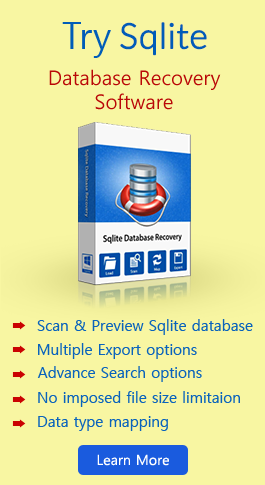Implementing Sqlite Online Backup API
Overview
Earlier, the backup of Sqlite database was taken by following the below mentioned method:
- Establishing a shared lock on the database and then running Sqlite API.
- Creating a backup with the help of external tools.
- Removing the shared lock from the database.
However, there are few drawbacks associated with this method. Therefore, in order to create Sqlite database backup without any limitations, Sqlite Online Backup API was introduced.
Advantages Of Sqlite Online Backup API
During Sqlite online backup API, Sqlite continues to enable the write transaction on the destination database that is being backed up.The read-lock is only applied on the source database, from which the backup is created, when it is being read by the destination database.Therefore, this enables to perform the backup of a live database without hindering any other database from writing to or reading from the database while the backup is in process.
The main advantages of Sqlite Online Backup API over historically deployed backup procedure are:
- Allows other databases to continue with their functions without being interrupted by the backup process of an online database.
- This backup process can be used to copy in and copy from the in-memory databases.
- In case of power failure, there are less chances of complete data loss from the backup database.
Functions Called In Sqlite Online Backup API
The three functions that are used for performing the backup using Online Backup API are:
- 1. sqlite3_backup_init()
- This function is called for initializing the backup process.In addition,a sqlite_backup object is created for copying data from a file to in-memory database or from in-memory database to a file.
- 2. sqlite3_backup_step()
- This function is called with -1 parameter to copy the data between source database and the destination database for once or many times.
- 3. sqlite3_backup_finish()
- This function is used at the last in order to release the objects and resourcesacquired by sqlite3_backup_init(). For each successful sqlite3_backup_init(), there should be only one call to sqlite3_backup_finish().
Error Handling In Online Backup Operation
In case any error is observed in any of the three functions of online backup API, then the errors and the related messages are attached to the destination database. If an error is encountered by sqlite3_backup_step(), then the error is returned by both sqlite3_backup_finish and the sqlite3_backup_step (). Therefore, a call for sqlite3_backup_finish does not overwrite the error generated by sqlite3_backup_step () in the destination database. This feature is used in order to reduce the error handling in Sqlite database.
Usage Of Database Handles In Concurrent Manner
In case your Sqlite database is configured to support threadsafe database connections, then the source database can be used for any other application whilst the backup in under process. Also it is to be made sure that the destination database is not used by any other API after the function sqlite3_backup_init() has been called and before the function sqlite3_backup_finish() is executed completely.
As compared to the backup methods used before, the Sqlite online backup API is a much more efficient and easy process for backing up the Sqlite database.
Conclusion
There are instances when due to certain human errors or hardware glitches, Sqlite database may be corrupted and eventually result in the loss of crucial data. In such scenarios, deployment of third party tool becomes necessary. This is because, no manual method, whatsoever can help the users to view and recover the corrupted data. One such tool is Sqlite database viewer. This being a freeware enables the users to view corrupted Sqlite database without spending a single dime. The entire database will be easily recovered and a preview of the data items will be generated.



